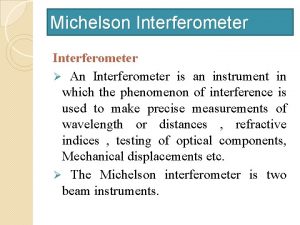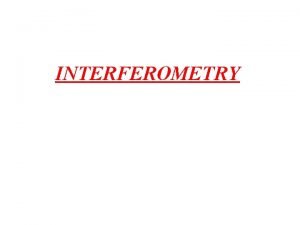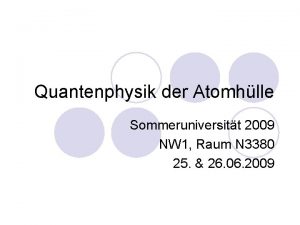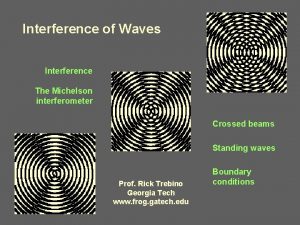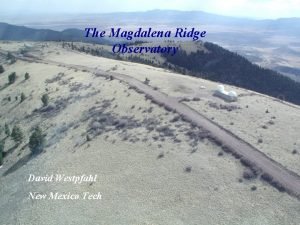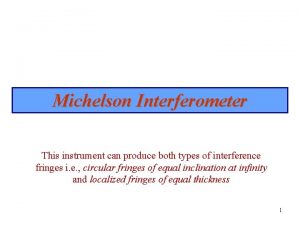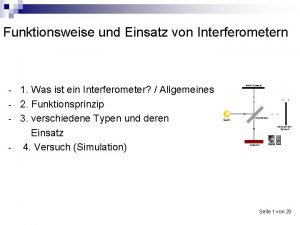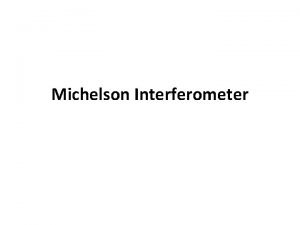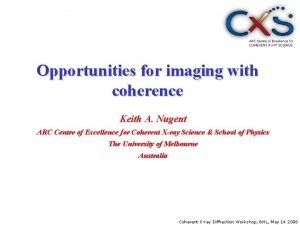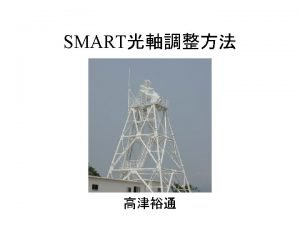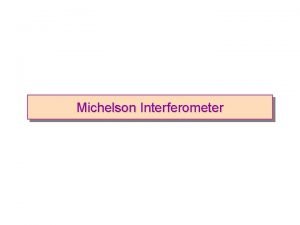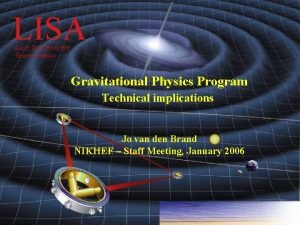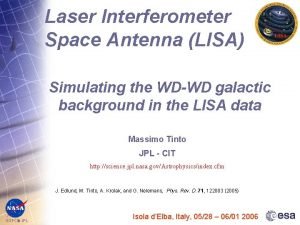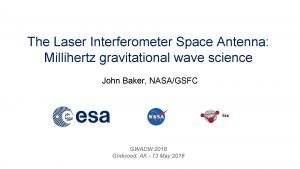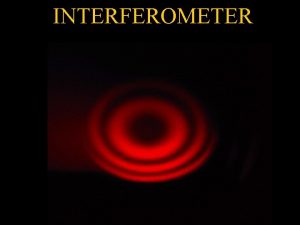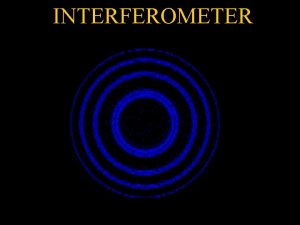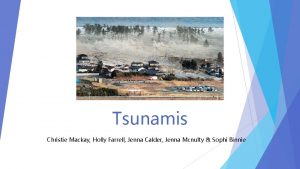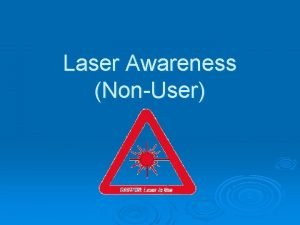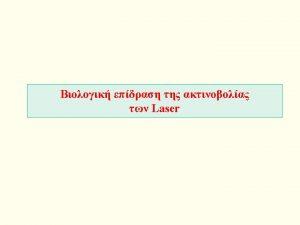LISA Autocollimator Jenna Walrath 81909 Laser Interferometer Space





















- Slides: 21

LISA Autocollimator Jenna Walrath 8/19/09

Laser Interferometer Space Antenna (LISA) � Mission › Will detect gravitational waves within a frequency range from 0. 03 m. Hz to above 0. 1 Hz � Structure › Three spacecraft in equilateral triangle with 5 million km sides

Laser Interferometer Space Antenna (LISA) http: //www. nasa. gov/cen ters/goddard/images/co ntent/181573 main_lisa_ LO. jpg

What is an autocollimator? � Optical device for measuring angles � Basic idea is to image something on a camera and measure the deflections of the image Laser CCD or other readout device Beam splitter Lens Mirror

Specifications � Dynamic range of 1° � Noise level of 1 nrad/√Hz � Work at a distance of 1 m

Initial Design Goal � Instead of point source of light, use a grating of imaging just one grating, image three—two stationary reference patterns and one dynamic pattern

The Plan LED w/ diffuser Top View Grating CCD Camera Mirror Beamsplitter Lens Two Beamsplitters

Humble Beginnings Side View (sort of) Paper Diffuser Grating Red LED CCD Camera Lens w/ aperture Mirror

Humble Beginnings 6/23/09 High-tech lightshielding device Mirror Light with diffuser and grating Lens with aperture Camera

Improvements to the Plan � double black line in the grating � converging lens between the LED and the grating › Allowed us to get rid of the diffuser � Switched from red (627 nm) LED to green (530 nm) LED � Encased the whole thing in Styrofoam � Instead of 3 images, just use 1 reference pattern and 1 dynamic pattern (so only one beamsplitter at the end rather than two)

Current Design Green LED light source Auxiliary lens 40 R/60 T Beamsplitter Grating w/ 135 μm slits Mirror CCD Camera 50 R/50 T Beamsplitter 450 mm Planar. Convex Lens

8/16/09 High-tech lightshielding device LE D 40 R/60 T beam splitter Auxiliary Lens Grating Camera 50 R/50 T beam splitter Main Lens Mirror

8/11/09

Computer Interface Main Pattern Reference Pattern Double black line

Current Status � Dynamic range › We can move our pattern across the length of the camera (3648 pixels) › only limited by the size of the pattern › about 25 peaks in each pattern � Operating distance › still able to get a clear pattern at 1 m › The mount was so unstable though, the noise was useless to measure

8/12/09

Noise

Noise � We have shown that some of our noise is coming from fluctuations in the magnification of the image � Possible causes: › Most likely the expansion and contraction of our grating, which is composed of thin plastic › Vibrations might be causing tiny physical movements of the optical components

Next steps/Improvements � Test photomask grating � Stabilize mirror and beam splitter mounts � Find the best way to take advantage of the reference pattern in the data analysis Photomask Auto. CAD drawing with test patterns

In the long run � Make the setup more compact › Folding the beam path › Finding the ideal size for the main lens—as small as possible without sacrificing the quality of the image � Design stable mounting structure and housing for the device � While it’s being designed for LISA, its low noise level and large dynamic range make it useful for a variety of applications

Acknowledgements � I’d like to thank › my advisors, Jens Gundlach and Stephan Schlamminger, as well as everyone at CENPA › The REU directors, Wick Haxton, Warren Buck, and Deep Gupta, as well as Janine Nemerever and Linda Vilett for providing such a great REU experience
 Laser interferometer space antenna
Laser interferometer space antenna Interferometer oberflächenmessung
Interferometer oberflächenmessung What is the principle of michelson interferometer
What is the principle of michelson interferometer Npl gauge interferometer
Npl gauge interferometer Dreidimensionaler potentialtopf
Dreidimensionaler potentialtopf Michelson interferometer formula
Michelson interferometer formula Magdalena ridge observatory interferometer
Magdalena ridge observatory interferometer Michelson interferometer formula
Michelson interferometer formula Site:slidetodoc.com
Site:slidetodoc.com Prinsip kerja interferometer michelson
Prinsip kerja interferometer michelson Jenna nugent
Jenna nugent Jenna hodgens
Jenna hodgens Jenna cullen
Jenna cullen Kognitos
Kognitos Gcf of 4 and 8
Gcf of 4 and 8 Tiltj
Tiltj Jenna in chinese
Jenna in chinese Jenna abhijeet
Jenna abhijeet The damsel in distress archetype examples
The damsel in distress archetype examples Jenna henek
Jenna henek Bnl
Bnl Jenna grande
Jenna grande


